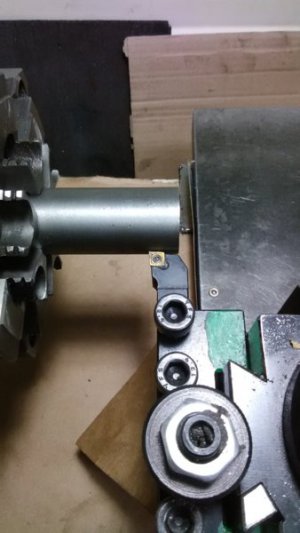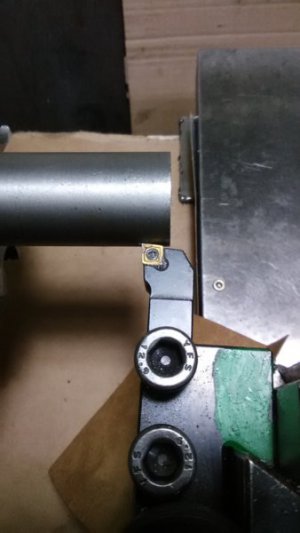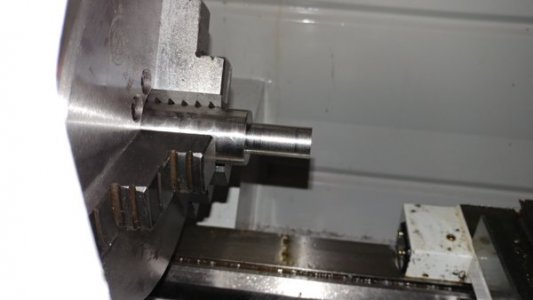So, I mixed up and thought this was the easier to machine version (303). Owell, it was cheap I guess. I'd like to try cutting it just for experience, though I may wait a bit and practice more on something else. It sounds like I want to go hard on it, bigger DOC, faster speeds. A few places recommended >500 sfm with carbide tooling. For this 1" bar that's.. 1900 RPM?? Seems a bit much. My lathe will run that fast, but I have never done so. 
Lathe is a PM1127, currently set to the high speed range. Mostly because it came that way and worked fine for what I was doing. Tooling is Chinese carbide, 1/2" holders CCMT060204 inserts. I could grind some HSS as well, if you want to offer some angles for that. I have some thick tap magic lubricant, wax, and kool mist 77 available. I could get some other lubricant though.
Lathe is a PM1127, currently set to the high speed range. Mostly because it came that way and worked fine for what I was doing. Tooling is Chinese carbide, 1/2" holders CCMT060204 inserts. I could grind some HSS as well, if you want to offer some angles for that. I have some thick tap magic lubricant, wax, and kool mist 77 available. I could get some other lubricant though.



